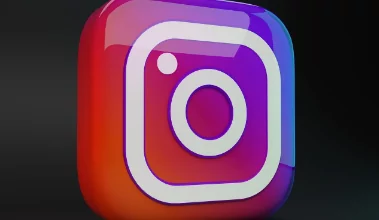Evolution of Instagram Mobile Application

This year the Instagram app will be celebrating 12 years since its first release and 10 years since its acquisition by Facebook (now Meta). Many have changed since the beginnings, which allowed the social network to grow to over 1 billion monthly active users. From a simple photo editing and posting became a complex platform and that changed many areas. The most interesting one is that the number of new creators helped arise to something called influencer marketing where the companies across many markets are heavily using so called influencers to promote and sell their products, giving creators potentially significant income. The resulting effect is that marketing campaigns are very decentralized and some industries are changed forever.
So let’s take a while to quick look at how the mobile app evolved with its user interface and features available.
2010 – 2013
The first app released was iOS one on October 6th 2010. To put that into perspective, it was shortly after the iPhone 4 came to the market with its 3.5 inches display and 960×640 resolution. A year after that, Instagram was already hitting 10 million active users and announced version 2.0 which mainly improved possibilities of photo editing like new filters and optional borders but also allowed rendering of high-quality photos.
It took another year until the Android version was released and it was downloaded more than a million times in the first day. The team behind the app was working diligently and in 2013 more important improvements were released, expanding from photo only to video content and as a response to other social networks, adding a messaging functionality. It was around this time that the company started to look into revenue streams and testing sponsored posts.
2014 – 2017
Until 2016 the app could be considered without any major conceptual changes, most of the changes were improvements of current features. But in March 2016, Instagram followed the model other social networks tested and switched its feed from chronological to algorithmically-driven posts first.
And just two months after that it got a huge visual update, where the whole interface was changed to a cleaner and more modern look. This wasn’t just a visual update of the application though, it was an update of the whole brand.
Instagram continued with adding more media features. First, they copied the main feature of Snapchat, which allows users to post temporary media that will disappear after 24 hours, and called it Stories. The time expiration was not the only major differentiation from normal posts, it’s also the fact that stories are much more personal and authors can see who viewed it (even though there quickly arose apps to bypass that).
Shortly after that they got heavily inspired by another startup Periscope and that’s how live video on Instagram happened. And since the video is a very strong medium for the past few years, another format called IGTV was added as a competition for YouTube.
In the midst of the additions, there was also one removal. A feature called Photo Maps that was part of the app almost from the beginning (2012) was removed, the company claimed that it was not widely used anymore. Since then the functionality was “reintroduced” in 2020 in a way. Now the users can see stories they posted on a map, while with the original version they were able to look at a map of posts of any public user profile.
2018 – 2022
Last three years not many changes were made, it’s clear that the social network reached a high level of maturity. In 2020 last addition of new media was added, this time as a retort to the super quickly growing Chinese TikTok. A feature named Reels targets the youngest generation by allowing them to create short and entertaining videos.
A tool for the businesses to help them sell product directly in the app was also added, called Instagram Shopping. Brands can therefore share posts of the products with the user’s possibility to buy them directly. The tab for the function was even added as one of the main tabs at the navigation panel which shows us that Instagram takes this seriously and has a big plan with this.
We can only wonder what the future of social networks will bring us. Instagram has historically had success with heavy inspiration or copying of competition. They did it with Snapchat, Periscope and TikTok and if there’ll be new player on the block, there’s a high chance they’ll took a shot at it as well. They also seems to be going back to the roots with some things, like already mentioned return of photo maps and this month they’re reintroducing the possibility to view posts chronologically.
The parent company is ongoing a transformation to web 3.0 that was officially announced with rebranding from Facebook to Meta and it is yet to see whether Instagram will play any role in this.
For more valuable information visit the website





